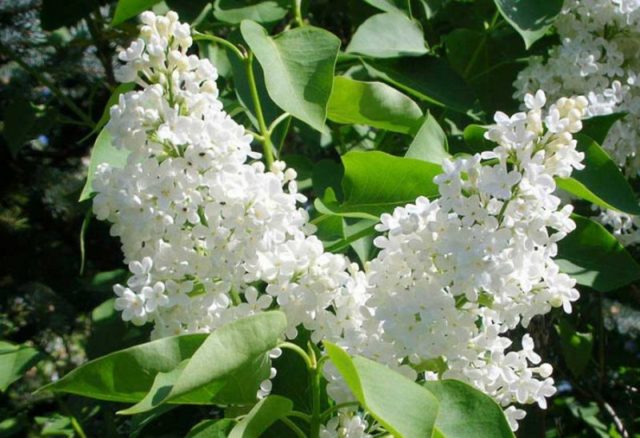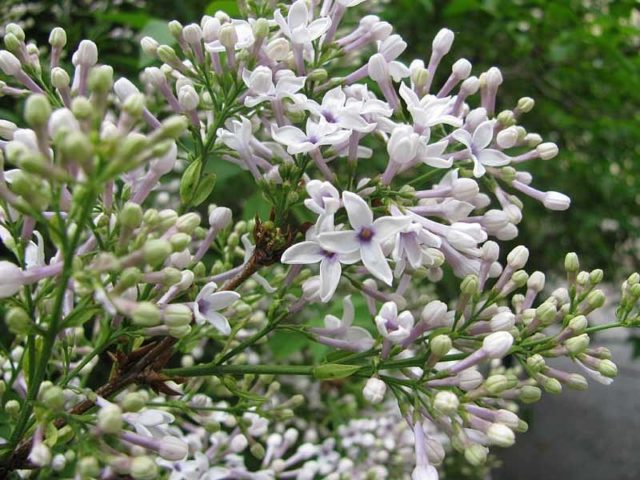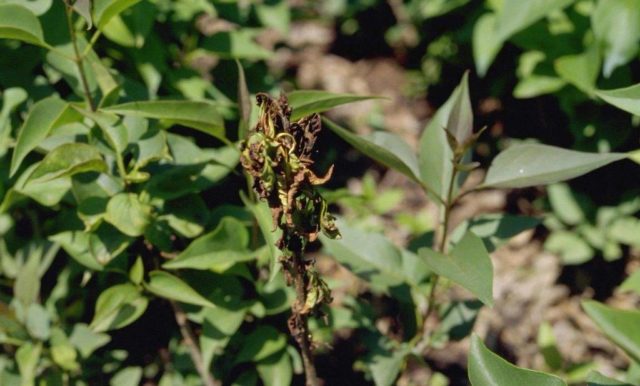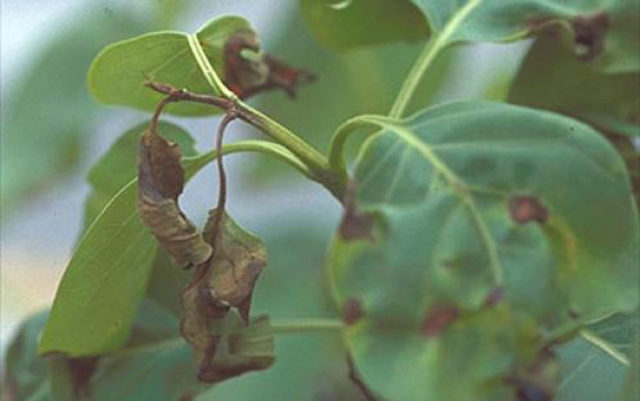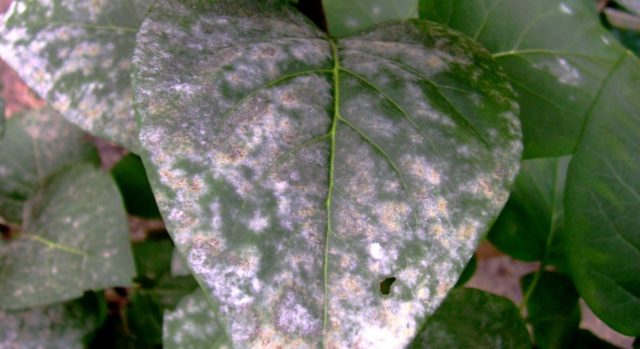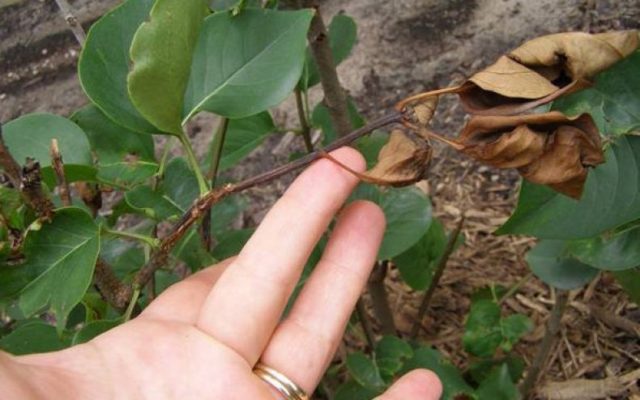Content
Chinese lilac is one of the hybrid varieties of a well-known shrub. This species with delicate foliage and beautiful inflorescences has long been used in horticulture. In addition, the new variety has a number of other improved characteristics.
General description of Chinese lilac
The Chinese lilac shown in the photo was discovered in the 18th century in the botanical garden of the French city of Rouen, and it still remains a mystery why it is called that way, because this species does not grow under natural conditions.
The outward resemblance of the shrub to the Persian lilac prompted breeders to think about the hybrid origin of the species, which was later proved by L. Henry and E. Lemoine in the course of testing by artificial crossing of various species.
Thus, it was established that Chinese lilac (Syringa x chinensis) is an ornamental perennial garden shrub that belongs to the Olive family, was obtained by crossing common and Persian lilacs. As a result, the hybrid received an improved bush shape, lush flowering, resistance to dry periods, improved rooting and survival rate.
The bush can be 5 m high. The diameter of the trunks is smaller than that of the common lilac. The graceful branches of the shrub hang down, its crown is neat, up to 3 - 4 m wide.
Elongated leaves are pointed at the ends. They are not very large in length - about 4 - 7 cm, located opposite. Small tubular flowers form panicles 10-16 cm long and 2 cm wide. The inflorescences resemble a fox's tail or a pyramid.
How Chinese lilac blooms
Chinese lilac blooms magnificently, forms a lot of inflorescences, and this makes it look like an ordinary one. It starts in May - June and pleases the eye for another two weeks. Its inflorescences are varied - white, purple or pink. In addition, this species has forms with simple flowers and with terry, always with a fragrant aroma.
Forms and varieties of Chinese lilac
Chinese lilac has several forms, both popular among gardeners and not so, each of them has its own distinctive features.
- Chinese lilac Saugeana (Saugeana, or Sojina). This is the most common form of this species. The diameter of the spreading crown of the bush is 3 m, the height also reaches 3 m. Large purple inflorescences of Chinese narrowed lilac look good against the background of green foliage;
- Chinese Lilac Duplex, or Double. This is also a small bush, the maximum height of which is 2, less often - 3 m. A distinctive feature of this form is the double flowers of a rich burgundy hue;
- Chinese lilac Metensis... The bush with an ovoid crown is higher in height than the previous forms - 3.5 m. Panicles of pale purple inflorescences are large: 15 - 16 cm in length and up to 9 cm in width;
- Chinese Lilac Alba Dieck - characterized by spectacular white colors;
- Chinese lilac Bicolor (Lemoine) H. Jaeger. Although this variety is not widespread, its flowers are very rare and unusually beautiful - two-colored.
How Chinese lilacs multiply
There are several ways to propagate a bush using:
- Seeds;
- Layers;
- Grafts;
- Cherenkov.
Gardeners rarely use seeds for propagation, because fruits are not always available. For better germination, it is necessary to carry out stratification - keep the seed in moist sand in the refrigerator for 2 months. In early spring, it can be planted in a box with soil to a depth of no more than 1.5 cm. Seeds can sprout in 2 weeks or after several months. Seedlings dive 2 weeks after they sprout. It is important that the air and soil are well warmed up, it is then that the time comes to transfer the seedlings to the site.
One of the common breeding methods is Chinese lilac layering. In the spring, the one-year-old shoot is tied with copper wire in two places: at the base and at a distance of 80 cm from it. The bark cannot be damaged. The branch should be laid in a groove near the bush, sprinkled with earth (except for the top). As soon as the new shoots reach a height of 15 - 17 cm, they are spud. In the fall, the layers are separated from the bush.
In the spring, gardeners also quite often plant the bush - this is the second common breeding method. Cuttings are prepared in early spring and kept in the refrigerator until grafting. The graft is wrapped in a bag. It is removed after the kidneys begin to swell.
It is not very easy to propagate Chinese lilacs using cuttings, because they do not take root well. For this purpose, young shoots (preferably annual) are suitable, which are cut directly during flowering or after. The cuttings are rooted in a greenhouse in a calcined soil of peat and sand. It is important to cover the shoots. After about 2 months, the cutting will take root, and in spring the plant can be planted on the site.
Planting and caring for Chinese lilacs
Chinese lilacs are quite winter-hardy and drought-resistant. But some of the nuances associated with planting and further care still need to be observed, because it is not for nothing that this species does not grow in the wild.
Chinese lilac - planting and care in the photo:
Recommended timing
With the exception of certain conditions, for the breeding methods of the bush described above, the optimal planting period for Chinese lilacs is considered the second half of July - early September. At other times, the bushes will take root worse, they will hardly give a good growth and will not bloom for several years.
Site selection and soil preparation
Choosing a suitable place for a bush in the garden is important. To do this, follow the rules:
- Chinese lilac grows preferable with access to the sun, moreover, there should be a lot of light. If you place the bush in a shady place, it will bloom very modestly, it is even possible that the buds will not bloom at all.
- The plant needs protection from strong drafts, but light ventilation for the growth of Chinese lilacs must be present.
- It is better to choose a place on a hill in order to avoid root rot due to stagnant moisture.
- Chinese lilacs are demanding on the type and fertility of the soil, like humus. It is necessary that the soil is moderately moist and drained, with a neutral or slightly acidic pH value.
How to plant correctly
It is recommended to follow the following steps:
- Prepare roots - remove weak and damaged ones. Cloudy weather or early morning is more suitable for planting.
- It is necessary to first dig a planting hole larger than the roots, along with a lump of earth: approximately 50 - 60 cm deep and wide.Important! If you plan to place several plants next to each other, it is worth considering that the distance between them should be left about 2 - 3 m (the diameter of the crown of an adult lilac).
- Drainage must be laid at the bottom of the pit. It can be crushed stone or expanded clay. Next, add some soil with top dressing and place a Chinese lilac seedling. It is important to carefully distribute its roots over the pit.
- Then sprinkle the seedlings with fertile soil and compact the surface with your hands (you do not need to press hard).
- Sprinkle the newly planted bush with plenty of water.
Growing rules
Chinese lilac is relatively unpretentious, but in order for it to bloom more luxuriantly and grow faster, it is worth adhering to a number of rules - watering, feeding, pruning and preparing for winter. Then the culture will decorate the site for many years.
Watering schedule
Chinese lilac tolerates drought, so in summer it is not recommended to water it very often and not too much: the plant has enough rainfall. But during the growing season and active flowering of lilacs, a large amount of water is needed.
What can you feed
In the first 2 - 3 years, it is not necessary to fertilize the plant: for growth and development it has enough minerals added during planting. Further, the shrub should be fed with nitrogen fertilizer (60 g per bush). Slurry will also work and should be applied at about 2 buckets per plant. Nitrogen fertilizers improve leaf color and stimulate shoot growth.
About 1 time in 2 years, the plant is fed with double superphosphate and potassium nitrate (35 g per bush).
Soil mulching
The trunk circle of Chinese lilac is mulched with peat and rotted leaves. This is done to protect the roots from overheating. It is enough to loosen the soil 3 - 4 times a season to a depth of 7 - 8 cm. It is important not to damage the roots. Alternatively, there is another option - to plant small perennial plants under the lilacs. They will loosen the soil naturally.
Pruning Chinese Lilac
Pruning ennobles the shrub or gives it a beautiful shape, making it look well-groomed immediately. It is recommended to do this three years after planting. It is better to cut a haircut in early spring, before the buds swell. Weak or damaged branches should be removed every year.
In addition, pruning rejuvenates the bush and gives the crown the correct shape. In this case, only 5 or 10 of the healthiest and straightest stems should be left.
Preparing a shrub for winter
Young shrubs are recommended to be covered for the winter. This should be done only when cold weather sets in, but not earlier. The root circle is covered with a dense layer of 10 cm from fallen leaves and peat.
Bushes growing in the middle zone, in the Urals and even in the Moscow region should be covered for the winter, since at very low temperatures there is a risk of freezing of the shoots.
Application in landscape design
This very neat, beautiful and effective plant can decorate a garden area by itself, for example, rising on a lawn, and also become part of a composition with other plants.
A significant plus of the Chinese lilac, often used in gardening, is a powerful, branched root system. This allows the shrub to stand securely in the ground and help strengthen crawling slopes or loose soil.
Chinese lilacs are also suitable for hedges. Fences made of multi-stem shrubs are quite dense and beautiful.
Pests and diseases
Chinese lilac is a fairly persistent crop, but some diseases and pests can overcome it, in particular:
- Bacterial necrosis... Accompanied by a change in the color of the foliage from green to gray. The shoots turn brown. To prevent this, it is recommended to thin out the crown for ventilation of the lilac.
- Bacterial rot... The disease affects the leaves, flowers, shoots and buds of Chinese lilacs, they gradually dry out. You can cure lilacs. To do this, it is necessary to spray the bush 3 or 4 times with copper oxychloride with an interval of 1.5 weeks.
- Powdery mildew... Leaves are covered with plaque. It is necessary to cut off the infected areas and spray the bush with the fungicide. In the spring, it is better to dig up the soil with bleach (100 g / m2).
- Verticillosis... The leaves roll up, their surface is covered with brown spots. The bush dries quickly, starting from the top.The affected plant must be treated with a special solution - 100 g of soda ash and laundry soap are added to 1.5 buckets of water.
In addition, a hawk moth, a miner moth, a lilac moth, as well as a bud and leaf mite can disturb the shrub. It is necessary to spray the plant with appropriate preparations.
Conclusion
Chinese lilac is one of the most abundantly and interestingly flowering shrub species. Gardeners actively use it to decorate plots as an independent plant or in tandem with others.
Testimonials




